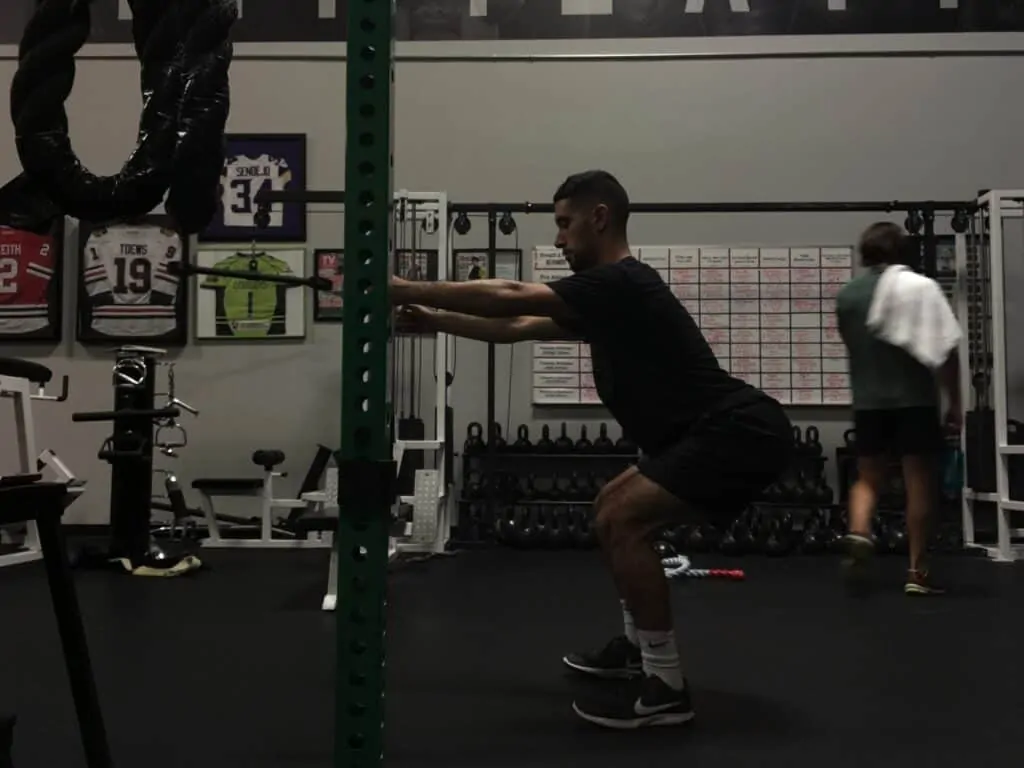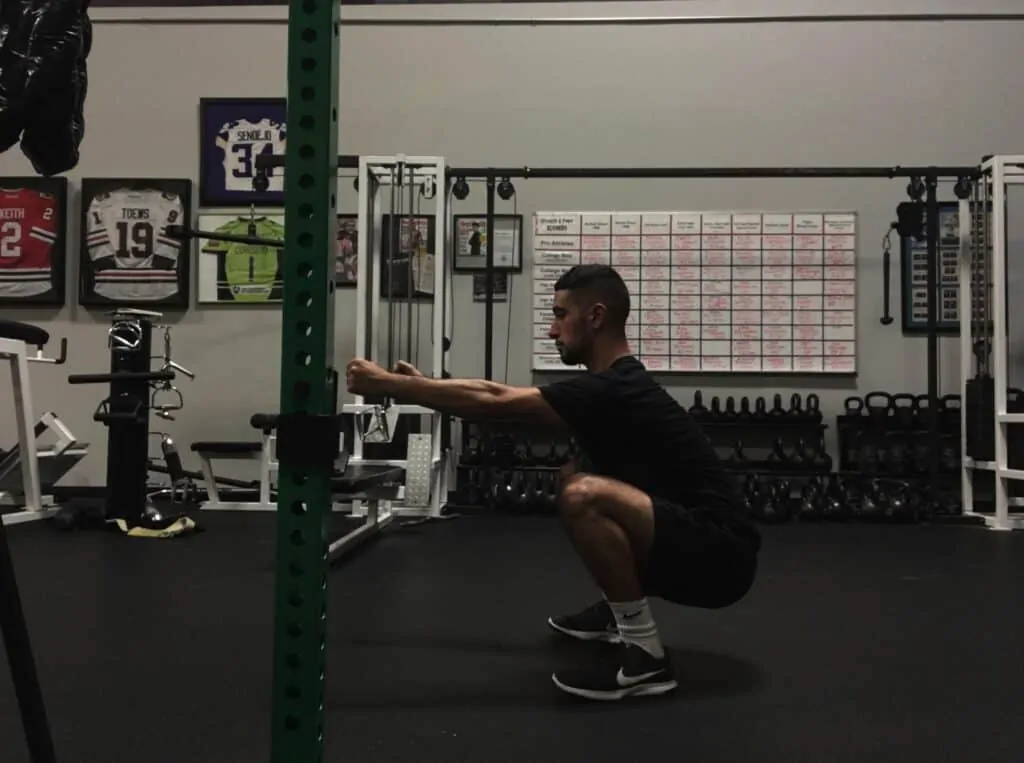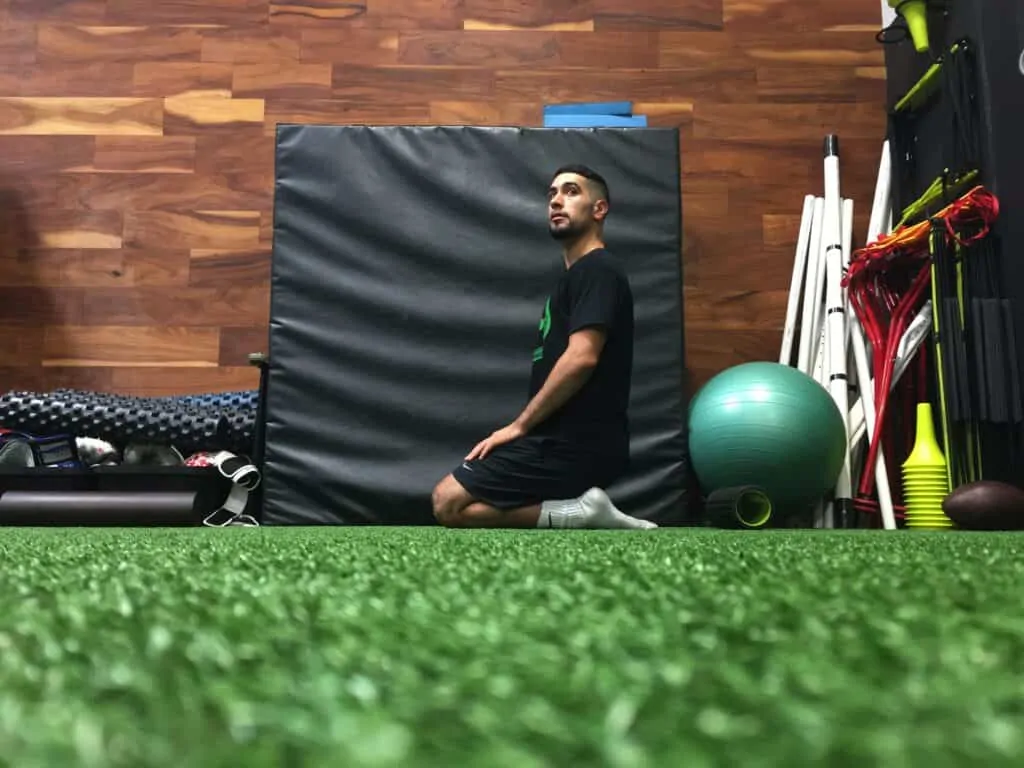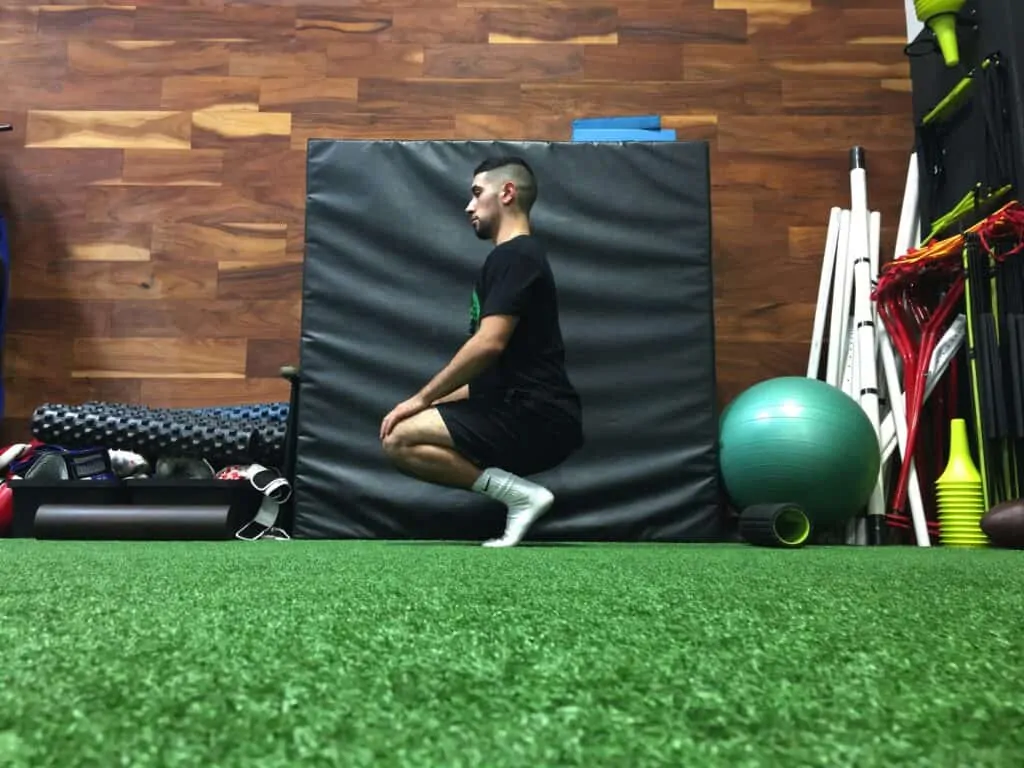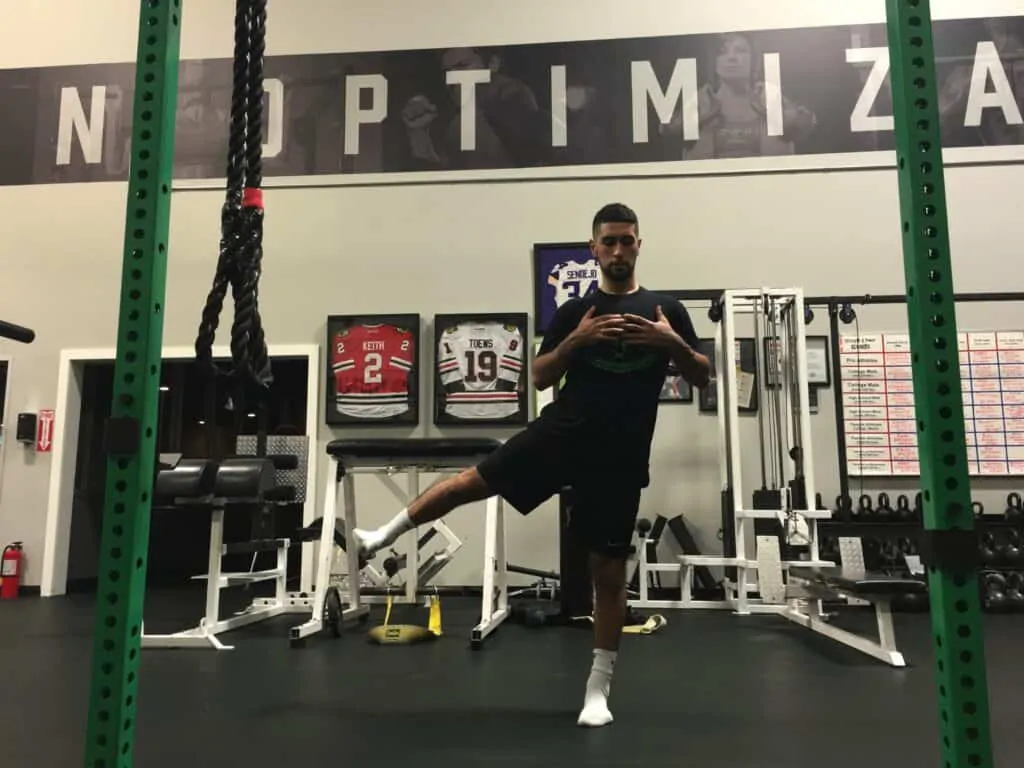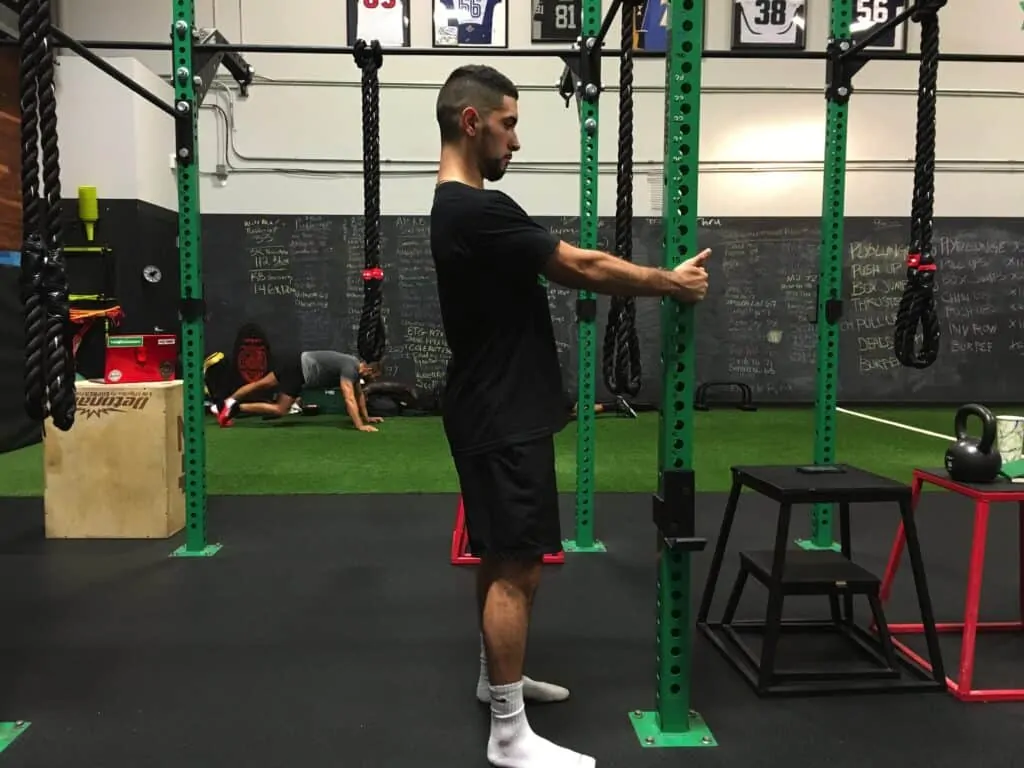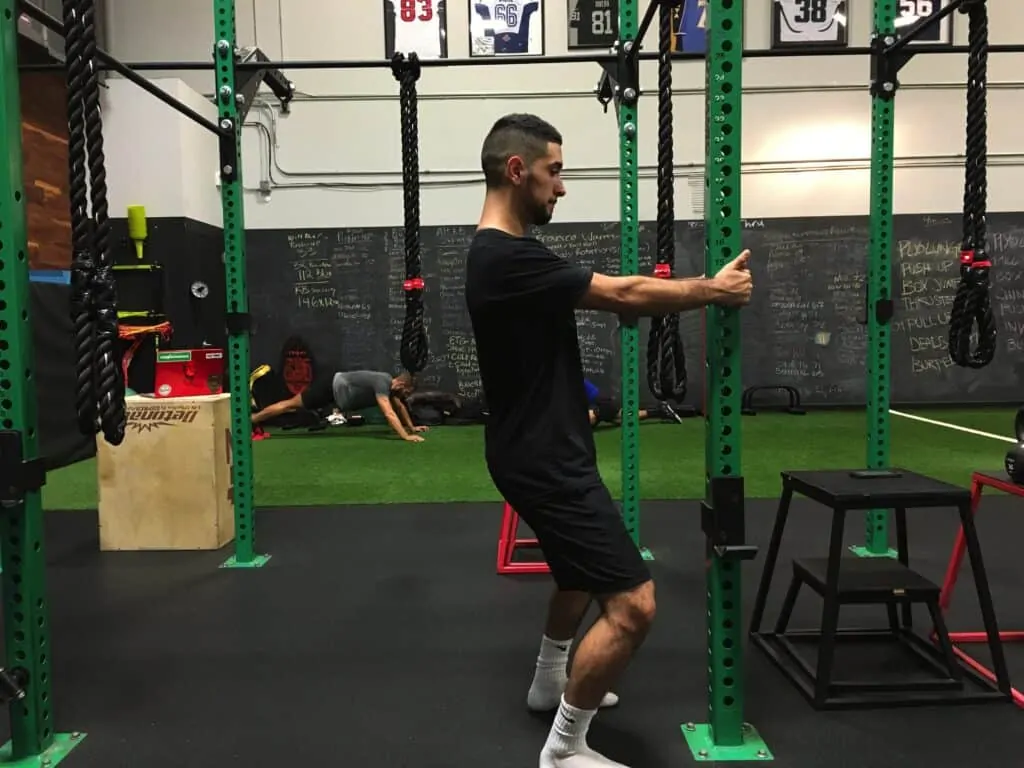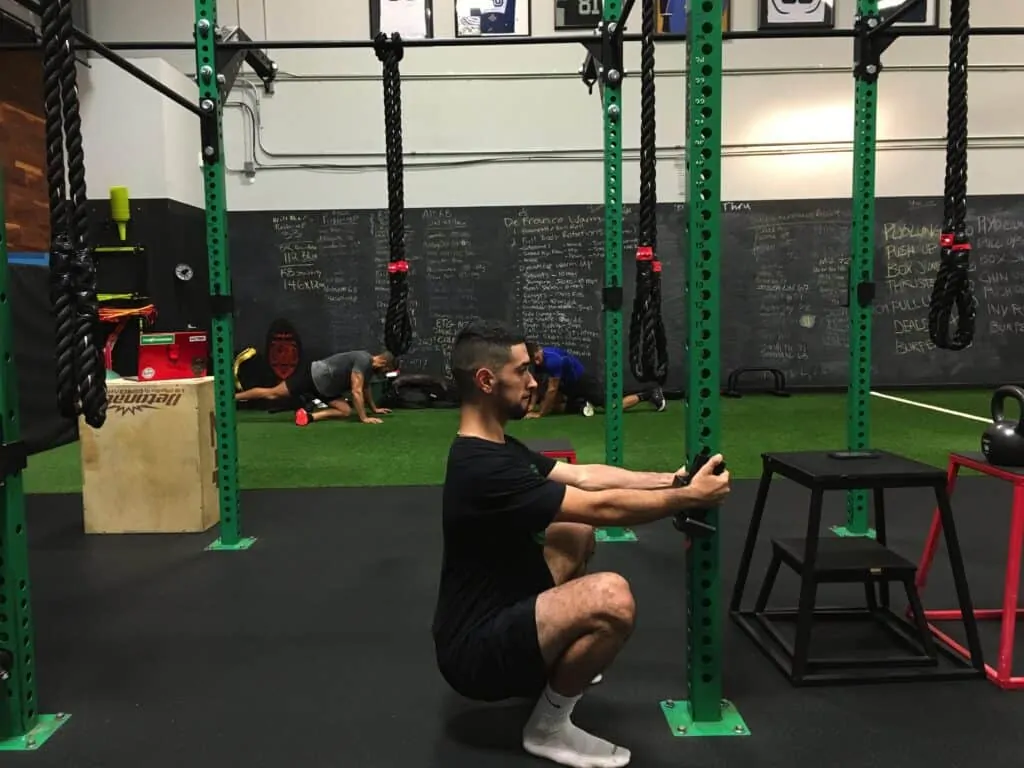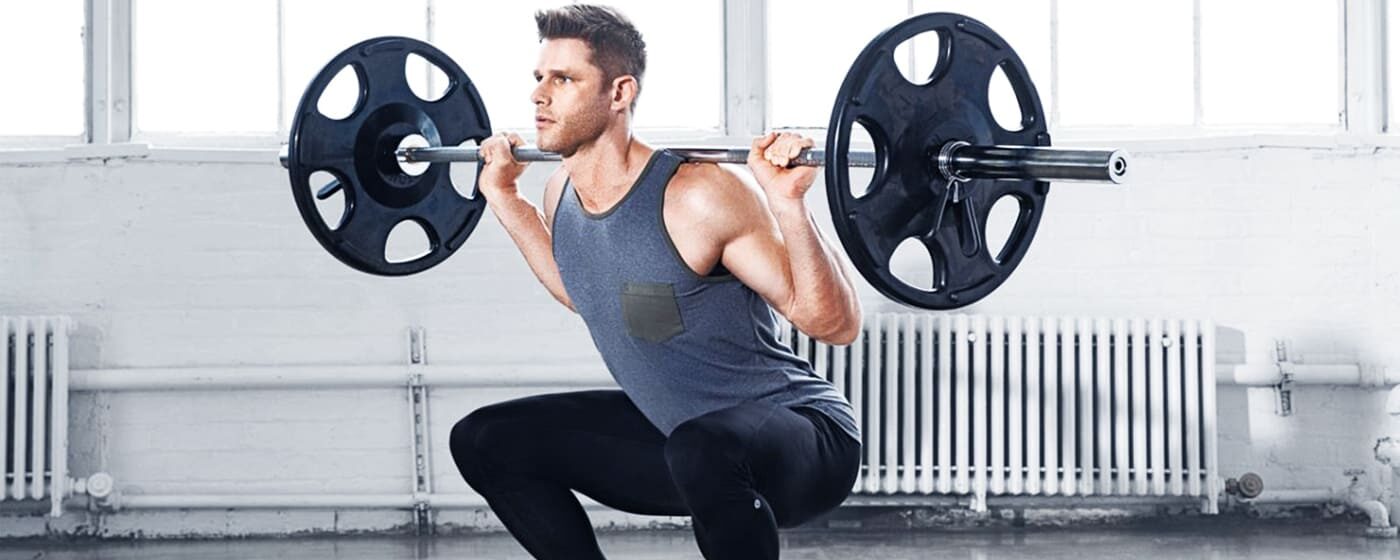
[vc_row][vc_column][vc_column_text]
The squat is a very important fundamental movement pattern that is practiced on a daily basis. Whether we are at the grocery store putting the pack of water under the cart, or squatting down to put on our shoes every morning.
For an athlete, the squat is even more monumental. For most athletes, being in an ‘athletic’ position or ‘ready’ position is a necessity and having the appropriate pre-requisite range of motion and access to strength in this position is a huge determining factor when it comes to athletic performance. How comfortable are you in your squat, athletic position??
Now, I see many different types of squats at the Onnit Academy, due to the wide variety of clientele that comes in through the door.
For the NFL linemen, I see more of an ‘ass’ back approach where the hamstrings and posterior chain receive a little more activation than what you would see with your UFC/MMA athletes who take an ‘ass to grass’ approach, placing more stress on their hip adductors and anterior chain.
For example, the following pictures are depicting the two different types of squats I see on a regular basis:
1. Hips Back
2. Ass to Grass
Now, your first question may be which one is better than the other?? Just like the blog post I put up before this one titled Weights vs. Bodyweight, there is not a strict, gold standard answer that is true across the board for everyone.
It’s what is necessary for the individual.
If you are an athlete with anterior knee pain or ankle issues, chances are I will not have you squatting ass to grass due to the stress on certain tissues. Although the benefits of ass to grass squats would be aiding in releasing the tension built up in your hip adductors and giving you more access to strength in this relative position, there are other ways to effectively open range of motion without putting yourself at risk for future injury.
Also, ask yourself this important question that is a reoccurring theme at the Onnit Academy: Do you squat a certain way because you need to squat this way (due to only having access to this form of squat), or do you choose to squat or move a certain way because you want to!? (food for thought)
Being observant to the many structural differences athletes and the general population have, the following images will serve to speak to 3 different movement prep (aka warm up) exercises that will help individuals: 1.) Access more range of motion in the hip region, therefore, 2.) Gain strength and activation in the lost ranges and 3.) Prep their bodies before a squat day.
Movement Prep Exercises:
(I would highly recommend doing 5-10 bodyweight Squats before completing these exercises then test your bodyweight squat following these exercises)
Mark Cheng:
3 sets. 20 seconds rest b/w sets.
A.) Begin by folding all 10 ten toes so that the top sides of your feet and toes are facing directory towards the ground. Really make sure your pinky toes and all toes are in contact with the ground. Sit directly on your knees and make sure your hips are shoulders are stacked in a vertical orientation. Hold for 30 seconds.
(Regression: use a stick or foam roller to help you sit upright at first if the tension is too much)
B.) Make sure the bottom surface of all 10 toes is in contact with the ground. Now, pull your heels up towards your booty. Shoulder and hips are stacked in a vertical orientation. Same concept for a regression by using a pole or stick for getting into an ideal position. Hold for 30 seconds.
Single Leg Lateral Hold:
3 sets. 30 sec rest b/w sets.
Begin this movement by turning your hips/toes inward so that your toes and ankles are pointing directly across from your working leg. From here keep your leg locked and raise it up to the side wall. Go ONLY AS FAR AS YOU CAN WITHOUT: leaning over to a side, or losing the locked out leg. Hold each leg 45 seconds.
Squat Pole:
3 sets of 5 reps (5 second hold). 45 sec. Rest b/w sets
Notice that the 3 pictures are a progressive checklist through a single rep.
Begin with your feet slightly wider than hip width apart and turn your toes out slightly. Begin this squat by allowing your knees to shoot forward over your toes AND tracking outwards towards the side walls making room for your pelvis to fall right in between your feet. At the bottom, really fight to tuck your pelvis forward, knees outward and feet FLAT! Don’t get lazy down there, keep your legs and feet active!!
Upper body, make sure or pelvis and shoulder are stacked in a vertical orientation as well as locked out arms. This will make sure your shoulder blades are engaged and pulled back.
If you are not able to go as low as the picture depicts go to a position that allows you to keep your spine upright, with your arms locked out and feet flat. If your feeling some tightness in the inside of your hips good job! Hold at the bottom for 5 solid seconds!
Completing these exercises prior to a lower body intensive day would be best to start with. Although I do not train the specific squat pattern more than 3 times a week, I believe it’s still beneficial to maintain the integrity and elasticity of the tissues surrounding of your hips.
As always, if you have any questions or concerns don’t be afraid to comment or contact me! Find me on Instagram (@cristian_g_plascencia) or Facebook (@Cristian Plascencia).
Onnit Academy Senior Durability Coach
Cristian Plascencia B.S.
FRCms
FRA
PN Lv. 1
[/vc_column_text][/vc_column][/vc_row]
